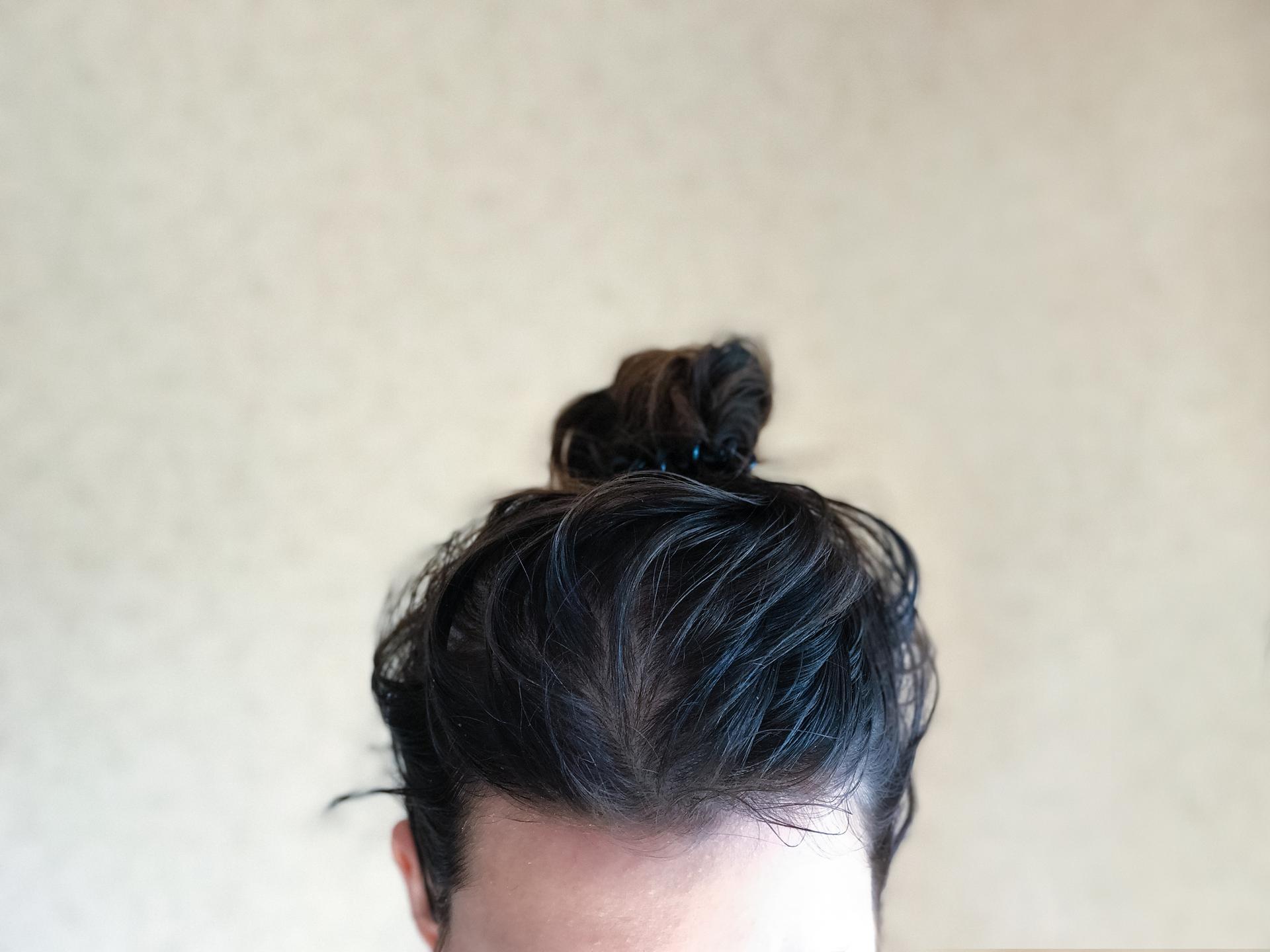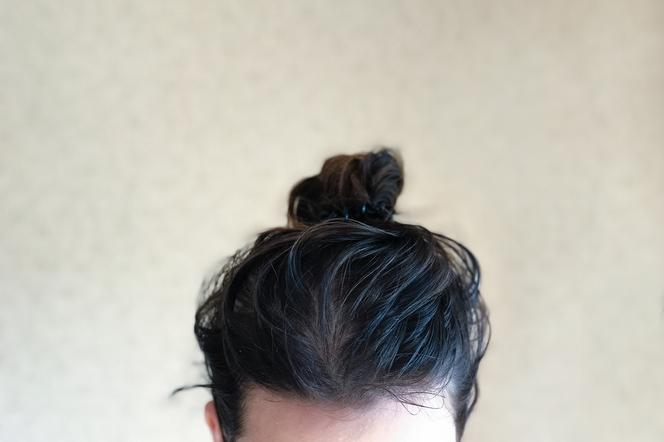
Sponsored text
Flaky scalp is often a significant problem, not only aesthetic, but also health-related. White skin flakes visible on the hair and clothes cause embarrassment, lower self-confidence, and ultimately lead to significant mental discomfort. Sometimes this problem is a one-off episode, but when it recurs or worsens and is accompanied by itching, burning, redness of the skin, it cannot be underestimated. It should be diagnosed whether it is one of the chronic dermatological diseases – dandruff, seborrheic dermatitis or psoriasis. How do they differ?

What is dandruff?
Dandruff is increased flaking of the epidermis on the scalp, but also on the beard and eyebrows. It is caused by disruption of the normal cell renewal cycle of the epidermis. In healthy skin, it takes 28 days for dead skin cells to shed and new cells to rebuild. In dandruff, this process is shortened. The newly formed cells multiply too quickly and die prematurely, resulting in the formation of patches and scales of dead epidermis, which form dandruff.
Causes and types of dandruff
The causes of dandruff are disorders in the secretion of sebum by the sebaceous glands (too little or too much production), the development of yeasts from the Malassezia family, which naturally live on the surface of the skin, but multiply in the presence of sebum, causing inflammation and excessive peeling of the skin. There are two types of dandruff: dry dandruff and greasy dandruff.
Dry dandruff – develops on dry, sensitive scalp. Even small amounts of yeast cause inflammation. Another cause of dry dandruff are poorly selected hair washing and styling products and hair dye products. Dry dandruff flakes are small, white and visible on clothes when they fall from the head.
Oily dandruff – develops on oily scalp. Accumulating large amounts of sebum promotes the growth of yeast. In the case of dandruff, the flakes of dead skin that form are larger and stick to the hair. It is also usually accompanied by intense itching of the skin.
There are many factors that can cause and worsen dandruff. In particular, this is stress, unbalanced diet, stimulants, hormonal disorders, weakening of the immune system, fatigue, lack of sleep, lack of personal hygiene, mistakes in hair care (improper rinsing of shampoos and conditioners, excess styling products, hot air of a hair dryer), frequent wearing headgear (helmet, cap).
How to deal with dandruff?
In case of dandruff, it is usually sufficient to use a shampoo containing an active ingredient that fights the growth of yeast and an active keratolytic ingredient that eliminates dead cells. Used in the intensive treatment phase, several times a week, it prevents and reduces dandruff. In the maintenance phase, once a week, alternating with a daily or soothing shampoo, prevents the recurrence of dandruff. For the shampoo to be fully effective, leave the foam on the skin for a few minutes.
Additionally, you should avoid drying and overheating the scalp. Rinse used shampoos and conditioners thoroughly. You should avoid excess nail polish and other styling products (they provoke the skin’s defense reaction in the form of excessive sebum production, which favors the development of yeast).
It is particularly important to take care of the hygiene of the scalp. Washing your head too rarely causes the accumulation of sebum and dead skin, and washing your hair daily with mild shampoos allows you to remove excess sebum without harming your hair. Hygiene lifestyle also influences the reduction of dandruff – a properly balanced diet, adequate amount of sleep and rest.
What to do when using shampoos does not give satisfactory results?
In this case, it is worth seeking advice from a doctor or pharmacist. Dandruff may be a problem in itself, but it is often a symptom accompanying another basic dermatological disease that requires appropriate treatment.
What is seborrheic dermatitis?
Seborrheic dermatitis is a chronic inflammatory disease with periods of improvement and intense exacerbation of symptoms. It affects 3-12% of the population and occurs in people of all ages, more often in men than in women.
What are the symptoms of seborrheic dermatitis?
Seborrheic dermatitis will be characterized by the appearance of symptoms and changes on the scalp similar to those of dandruff. It can range from fine-flake exfoliation of the epidermis, through extensive redness of the skin with yellowish and greasy scales, to thick scales closely adhering to the skin and surrounding the hair shafts. Skin lesions are often accompanied by itching and burning of the scalp of varying intensity.
The disease may be accompanied by severe hair loss, which disappears after the symptoms disappear. In special situations, when the disease is left untreated and lasts for a long time, it may damage the hair follicles and trigger the process of scarring alopecia.
Apart from the scalp, lesions may be present in the area of the eyebrows, forehead, eyelids, nasal-cheek folds, chin, upper lip, auricles, external auditory canals, sternal and interscapular areas. In these locations, erythematous spots will be visible, often covered with a yellowish scale
What factors play a role in the development of seborrheic dermatitis?
Seborrheic dermatitis is associated with excessive activity of the sebaceous glands, an imbalance of the skin’s bacterial flora, an excess of Malassezia fungi, an increased population of Staphylococcus spp. bacteria and a reduced amount of Cutinebacterium acnes, resulting in an inflammatory reaction that manifests itself in redness and accelerated epidermal renewal cycle, causing the formation of tiny white or yellowish scales on the skin surface.
Factors that exacerbate the course of the disease include: low ambient temperature (exacerbations of the disease occur in autumn and winter), stress, infections, neurological diseases (e.g. Parkinson’s disease, epilepsy, depression), alcohol, smoking.
What is the treatment for seborrheic dermatitis of the scalp?
The most common and often sufficient option are anti-dandruff shampoos containing ciclopiroxolamine, piroctone olamine, octopirox, and selenium sulfide.
To get rid of scales, you can additionally use keratolytic preparations containing e.g. urea or salicylic acid, lactic acid.
In case of severe inflammation, the doctor recommends treatment with local glucocorticosteroids. In situations of particular severity of symptoms, antifungal drugs are used for treatment.
How to prevent symptoms from recurring?
Awareness of the exacerbating factors and observation of which of them significantly exacerbate skin lesions allows for quick reaction in the event of an upcoming exacerbation. It is recommended to use a maintenance therapy in the form of an anti-dandruff shampoo for one day a week as a preventive measure.
What is psoriasis?
Psoriasis is a chronic and recurrent inflammatory disease with an immunological basis. In about 30% of people suffering from it, it occurs due to family conditions. This disease affects men and women equally often. It can appear at any age, but there are two peak ages of incidence, i.e. between 20 and 30 years of age and 50 and 60 years of age. As in the case of dandruff or seborrheic dermatitis, in psoriasis the skin cell renewal cycle is significantly shortened, in this case it lasts only 3-4 days instead of 28 days. This causes a significantly increased production of flakes and scales of dead epidermis.
What are the symptoms of psoriasis on the scalp?
The scalp is one of the most common locations of psoriatic lesions. It is often the first location where lesions appear. Skin lesions take the form of red papules and plaques covered with white and silvery scales. They can be extensive and extend beyond the hairline to the skin of the forehead and neck. They may be accompanied by skin itching and psoriatic alopecia.
Other locations where psoriasis occurs are usually located symmetrically on the elbows and knees, in the lumbar-sacral area, and on the nails.
What factors can initiate or intensify the disease process?
Psoriasis can be caused or aggravated by many factors, such as: injuries, infections, certain groups of drugs such as b-blockers, antimalarials, NSAIDs, lithium. The development of this disease will also be favored by a diet rich in animal fats, obesity, alcohol, smoking, metabolic disorders and stress.
Obesity, metabolic syndrome and cardiovascular diseases are more common in psoriasis patients than in the general population. 20-30% of people with psoriasis may develop psoriatic arthritis.
What is the treatment for psoriasis?
Key…
